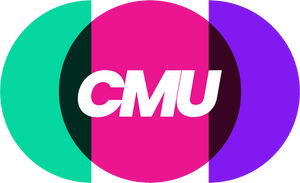YouTube is hoping that introducing its new cheaper Premium Lite product in South Korea might help address concerns raised by the country’s Fair Trade Commission about its bundling of YouTube Music with its main premium product. Launching Lite, which doesn’t include the music service, is reportedly part of a deal YouTube has proposed to the regulator to end a competition investigation it launched last year.
Optimists hope that forcing changes to YouTube’s subscription offering and pricing structure will provide a boost for Korean-based streaming services, which have struggled to compete with the big global platforms in recent years. YouTube Music now has more subscribers than previous market-leader Melon.
However, some are less optimistic, and fear that YouTube offering more flexibility around pricing will actually further its competitive advantage. One source told the Korea Herald, “There is a risk that more users will be drawn into YouTube’s ecosystem by attractive pricing, reinforcing its market dominance while further marginalising local platforms”.
For the music industry, the fact YouTube Music and the main YouTube platform are closely aligned has mainly been seen as a plus. The launch of YouTube Music was part of the Google company’s successful attempt to improve its relations with the music industry.
A promise to promote paid-for streaming to its massive user-base was an attractive commitment in an era when the music community was lambasting YouTube for paying far too little into the industry.
As part of that alignment, YouTube made its music service available as a standalone product, on similar lines and with a similar price point to Spotify and Apple Music, but also included it as part the the main YouTube Premium product. Premium also provides ad-free access and other added value functionality on the main YouTube platform.
Although YouTube Music has seen decent growth in many markets, it really gained momentum in South Korea. The global services were late to enter the Korean market, with Spotify only launching in 2021, and without its all important free tier until last year. As a result local services like Genie, Bugs, FLO and especially Melon initially dominated.
But now YouTube Music is the market-leader. According to Mobile Index, in February YouTube Music had 7.24 million monthly active users, compared to Melon's 6.77 million.
With YouTube Music so strong in the Korean streaming market, the fact the music app is bundled as part of the main YouTube product came in for extra scrutiny. Critics said that - because anyone buying YouTube Premium had to take a music subscription as part of the bundle - that made those users much less likely to sign up to a rival music service.
The Fair Trade Commission began an investigation last year, sending a formal report to Google Korea in July. According to Korea JoongAng Daily, the regulator concluded that Google “leveraged YouTube’s dominant market position by forcibly bundling YouTube Music with Premium subscriptions”, in doing so “unfairly hindering other music streaming services” in a way that violated fair trade laws.
Google has since been working to reach a settlement with the regulator that will be set out in a consent decree. Launching Premium Lite in Korea is reportedly part of that settlement.
YouTube Premium Lite was first tested in 2021, with another pilot then launching last year. Under that new pilot, the cheaper subscription option is currently available in the US, Thailand, Germany and Australia. With Lite, users get ad-free access to the main YouTube platform, but without YouTube Music. Lite also doesn’t offer offline consumption and music videos on the main platform still carry ads.
It’s not clear if YouTube would have to offer all aspects of Premium except music, including offline consumption, as part of Lite in South Korea in order to address regulator concerns.
Either way, given how YouTube generally prices its subscription products, it seems unlikely that it would be cost effective for current YouTube Premium subscribers to downgrade to Lite and then sign up to a rival music service. Which would mean the launch of Lite wouldn’t necessarily help other music platforms.
Although proposed pricing for Lite in South Korea isn’t yet known, in the US a Lite subscription costs $7.99 a month while a full Premium subscription costs $13.99. If a similar pricing structure is adopted in Korea, it would still be cheaper to take YouTube Premium with music than Lite and a rival music service.
That said, if a service like Melon is able to offer some added value extras not available on YouTube Music - whether that’s functionality or content - then users might be willing to pay slightly more overall, getting ad-free YouTube access via a Lite subscription and then accessing music elsewhere.

